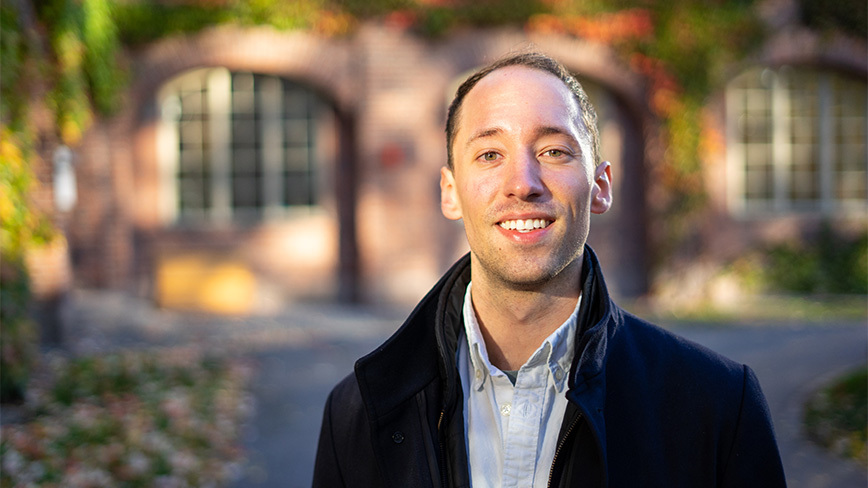Jonas Garemark, Fibre and Polymer Technology
Integrated Cellulosic Wood Aerogel Structures

The wood aerogels can be used as thermal insulation in buildings and for energy harvesting from water in order to create materials for self-sustained systems. Even though it’s a pure wood material, the thermal insulation effect is comparable to that of fossil based materials, which makes it unique. The aerogels are created through an uncomplicated and green process in ordinary lye.
What is your research about?
“It’s about the development of a new type of nanostructured wood materials. They are created by filling the empty wood space with highly porous structures based on its intrinsic biopolymers. Through different chemical strategies, it’s possible to control the structures through selective reassembly of the cell wall. The structures we get are called integrated wood aerogels. The aerogels are created through an uncomplicated and green process in ordinary lye. They have a unique combination of high specific surface area and strength, due to partial retention of the wood hierarchical structure formation of mesoporous nanofibrillated networks occupying the lumen.”
Which applications could this lead to?
“The wood aerogels can be used as thermal insulation in buildings. Even though it’s a pure wood material, the thermal insulation effect is comparable to that of fossil based materials, which makes it unique. Moreover, the aerogels can bend, which creates the possibility for thermal insulation in different geometrics. We have also used the wood aerogels for energy harvesting from water in order to create materials for self-sustained systems. By putting the wood aerogels in water, we can convert the water energy to electrical energy. This gives us enough energy to power a calculator or a LED lamp.”
What impact could it have on society?
“With the ongoing energy debate and the knowledge of the climate changes, material solutions with a low climate footprint are more important than ever. My materials are pure wood, namely materials without any additives. We take care of what nature gave us in order to create materials that can lessen the energy consumption in our homes (thermal insulation) effectively or even contribute with energy to the household (water energy converter).”
How did you become interested in this subject?
“During my master’s studies I was introduced to wood research and the nano components of wood (for example nano cellulose – which can be as strong as kevlar but completely renewable). The group I was in contact with had just created transparent wood, a material that was hard not to be impressed by. It was there and then my interest in wood chemistry awakened.”
Tell us about an exciting moment during your time as a doctoral student!
“A strong memory from my time as a doctoral student is when a colleague and I tried to create nanoparticles inside wood. We tried a number of methods, but all of them failed terribly. In the end, we had just one method that we knew of, but our expectations were very low. We put our pieces of wood in different solutions of gold and silver and started the synthesis. After a short wait we looked at our wood pieces and they had turned yellow and red! With further research we realized that we had achieved nanoparticles of structural colour (Plasmonic nanoparticles)!”
What challenges did you face?
“To invent a new material concept is a challenge in itself, since you do not have anyone to follow and compare yourself with. Except for the conceptualisation of the materials, I have encountered many technical issues. Sometimes you don’t have access to the equipment you need to be able to analyse certain characteristics, and at other times you can’t find the competency you need. These two problems have resulted in a very good cooperation with other universities and I have come across people that I otherwise would never have met. In short: Where there are challenges, there are also opportunities.”
Text: Åsa Karsberg
